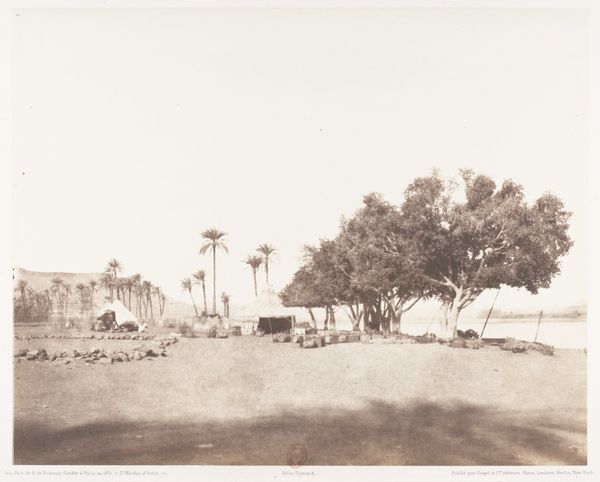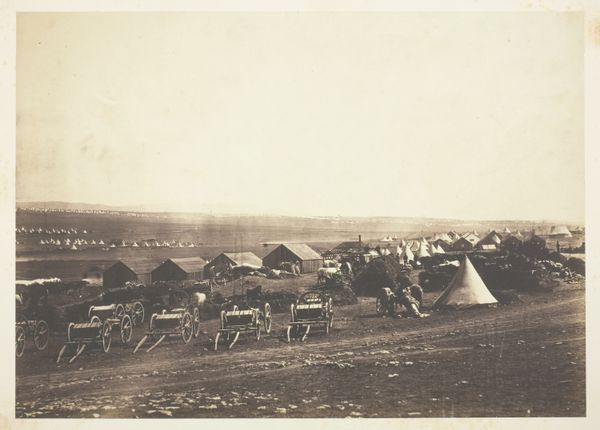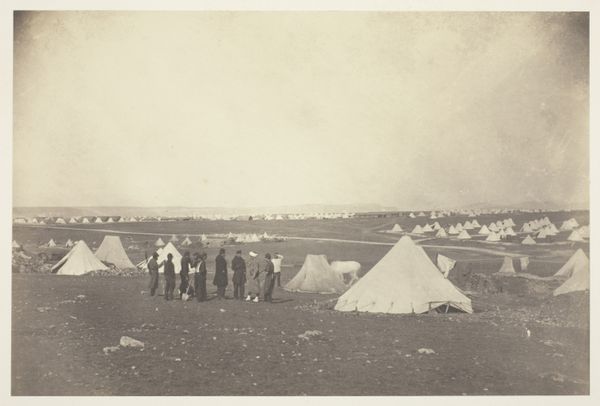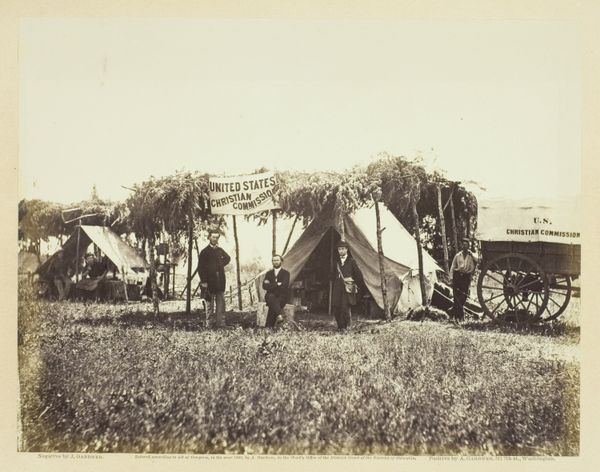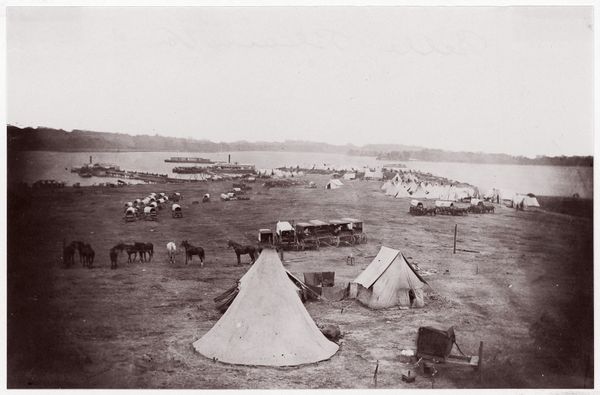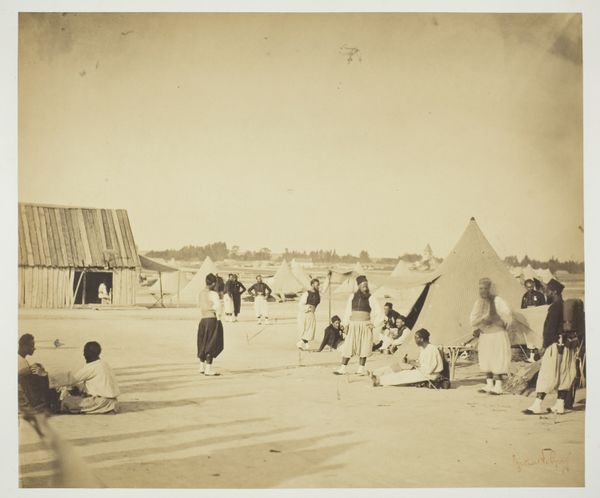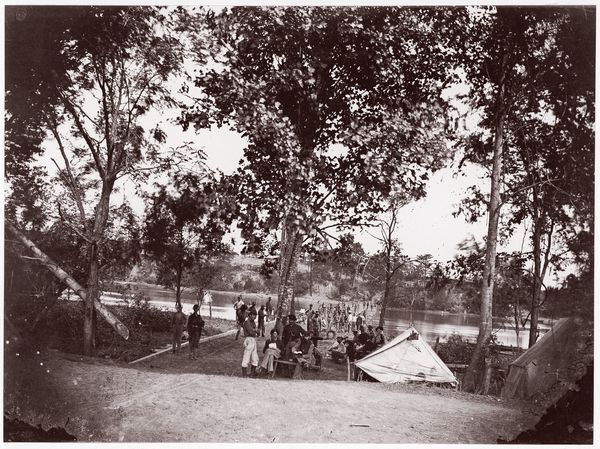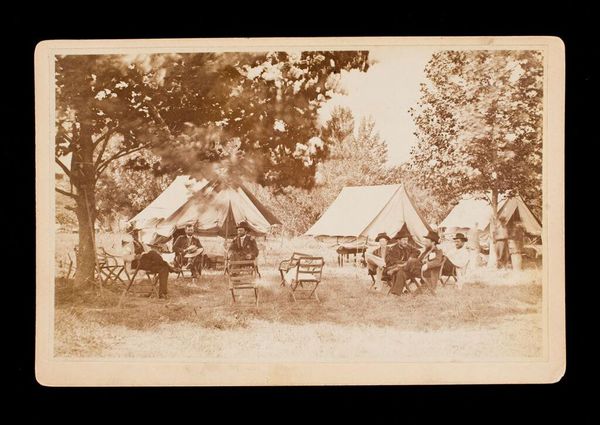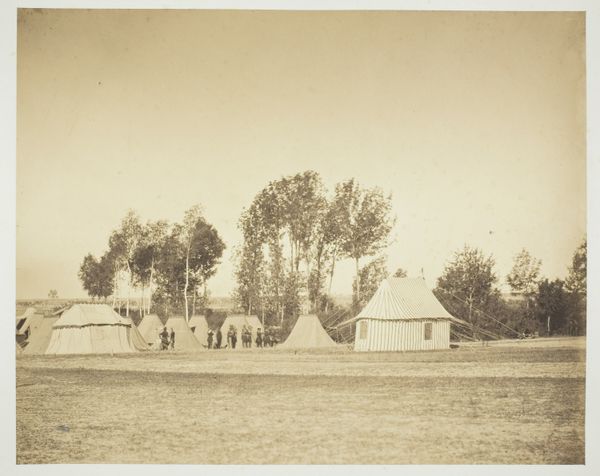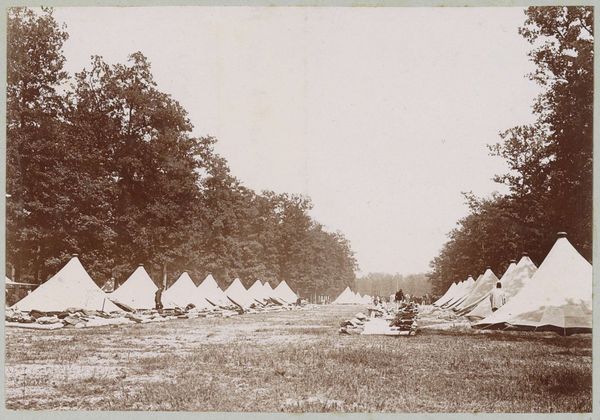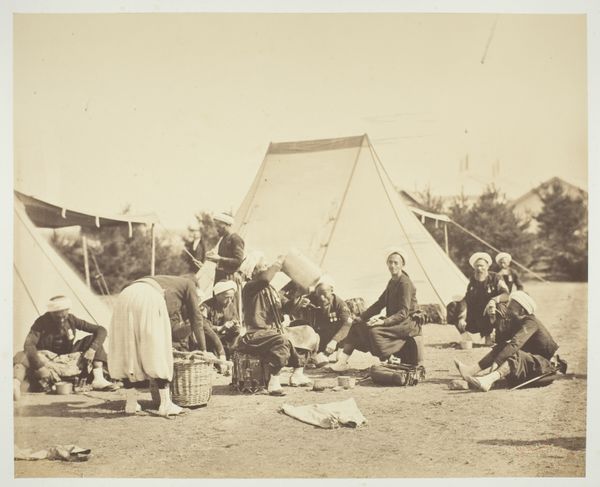
Preparation of the Emperor's Table, Camp de Châlons 1857
0:00
0:00
silver, print, photography, gelatin-silver-print
#
print photography
#
16_19th-century
#
silver
# print
#
landscape
#
photography
#
gelatin-silver-print
#
france
#
history-painting
#
realism
Dimensions: 28.6 × 36.8 cm (image/paper); 52.8 × 63.7 cm (album page)
Copyright: Public Domain
Editor: So, here we have Gustave Le Gray's "Preparation of the Emperor's Table, Camp de Châlons," taken in 1857. It’s a gelatin-silver print, and the scale of the landscape gives it a very staged, almost performative feeling. What historical narratives do you see embedded in this photograph? Curator: It’s interesting you say performative, because that's a great starting point. Beyond the obvious staged event, I see a potent commentary on power and visibility during the Second Empire. Consider the context: Napoleon III meticulously crafted his image, using photography as propaganda. This photograph isn't just documenting a meal; it’s showcasing imperial grandeur amidst military exercises, normalizing and celebrating colonial power. The workers preparing the table are visually secondary, reinforcing social hierarchies. Does that reading resonate with you? Editor: It does, especially when considering the composition. The long table acts as a barrier or division. It's meant to impress, but its very construction highlights that class separation. I guess I hadn't immediately considered the propagandistic aspect of this image. Curator: Exactly. The strategic use of photography created an illusion of accessibility and strength, a key tactic in solidifying his rule and suppressing dissent. What's striking is how seemingly neutral images can reveal these layers of social control upon closer inspection. It challenges the viewer to critically examine historical imagery. What do you make of its impact now? Editor: Thinking about it as propaganda, it's unsettling how powerful a seemingly straightforward image can be. It forces me to be more aware of the intended messages and hidden biases in similar historical documentation. Curator: And that’s precisely the power of contextual analysis. It encourages us to unpack the visual language of power, even in the most "realistic" depictions. I found it incredibly relevant. Editor: Absolutely! Considering its role within the politics of the time definitely opens up so much more about Le Gray’s composition. I feel like I understand so much more now.
Comments
No comments
Be the first to comment and join the conversation on the ultimate creative platform.

